Corsetry Symposium 2025 September 27th – 28th 2025
Images of the event will be available soon.
The Corsetry Retreat, in collaboration with Heritage Crafts, is delighted to announce a weekend symposium for corsetry professionals and enthusiasts.
Join us for a programme of talks and exhibitions exploring a wide range of topics, including corsetry, stays, and other structural undergarments.
Be part of the very first Corsetry Symposium — a weekend filled with inspiring daytime talks from leading researchers and makers, alongside a stunning exhibition featuring antique corsetry from the Symington Collection and displays by talented contemporary makers.
On Saturday evening, stay and enjoy relaxed crafting activities, games, a bar, and the opportunity to connect with fellow attendees.
Stay and enjoy our evening soirée on Saturday evening, this is a chance to meet like minded people and socialise with our amazing contributors. View the exclusive evening exhibition, and try your hand at some historical handwork skills in a series of informal workshops, including beautiful flossing, perfecting handworked eyelets, couture techniques as seen in Worth garments amongst others.
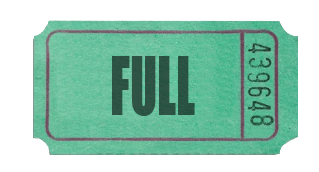
Your full ticket includes:
• Two days of talks from experienced practitioners and academics.
• An evening soirée with a buffet, bar and informal workshops.
• Lunch and refreshments on both days.
• Access to both the daytime exhibition with The Symington Collection and the evening exhibits.
• A panel discussion on historical importance and social impacts, with the opportunity to ask questions.
£240
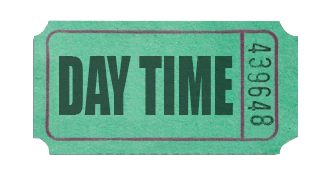
Your 2 days time only ticket includes:
• Two days of talks from experienced practitioners and academics.
• Lunch and refreshments on both days.
• Access to the daytime exhibition including the Symington Collection.
• A panel discussion on historical importance and social impacts, with the opportunity to ask questions.
£195
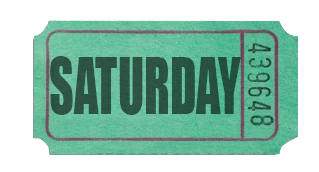
Your Saturday Daytime only ticket includes:
• One day of talks from experienced practitioners and academics.
• Lunch and refreshments throughout the day.
• Access to the daytime exhibition including the Symington Collection.
• Talks focusing on 19th century to contemporary corsetry.
£120
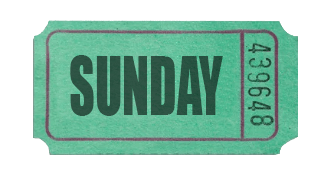
Your Sunday Daytime only ticket includes:
• One day of talks from experienced practitioners and academics.
• Lunch and refreshments throughout the day.
• Access to the daytime exhibition including the Symington Collection.
• Talks focusing on support garments pre-corsetry.
• A panel discussion on historical importance and social impacts, with the opportunity to ask questions.
£100
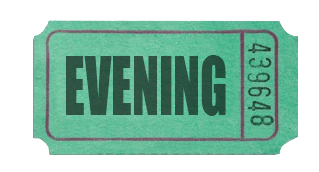
Your evening Soirée ticket includes:
• A social evening, with a buffet, Bar and informal workshops.
• Access to the exclusive evening exhibition.
• Photos in your finery with Kitty from Saxkjær Photography- optional extra
£45
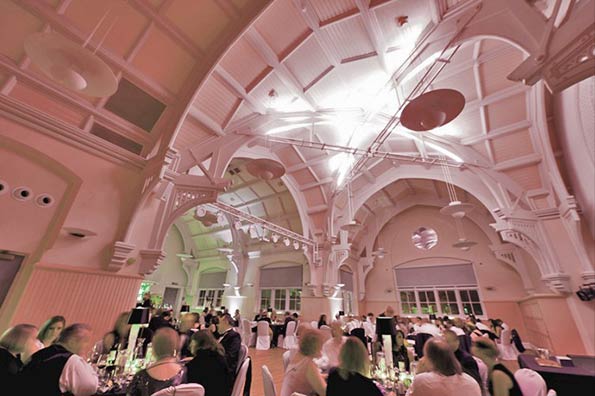
We can’t wait to welcome you!
We are thrilled to share our line up of speakers.
Describing Heritage Crafts’ work to support, safeguard and celebrate traditional craft skills in the UK in the context of the UK’s ratification of the UNESCO Convention for the safeguarding of intangible cultural heritage.
https://www.instagram.com/heritagecrafts/
Curves Ahead: Corsetry Fit for Boobs, Bellies, and Beyond is all about embracing the beauty and complexity of bodies that fall outside the standard sizing spectrum. I’ll be sharing practical techniques, patterning insights, and fitting considerations that I’ve learned through years of working with curvier clients. Whether you’re new to corsetry or a seasoned maker, my goal is to leave you feeling more confident and equipped to create supportive, stunning garments that truly celebrate every curve.
https://www.instagram.com/moodycorsetry/
Exploring the particular hold that corsets exert over us, unique among other garments, and the different ways we interpret their power. I have 18 years of bespoke clients anecdotes to draw from, and a personal interest in psychology to inform my findings! I think our subculture is full of fascinating individuals who tell their stories through the canvas of their corsets, perhaps offering an insight into the enduring popularity of corsetry.
https://www.orchidcorsetry.co.uk
Elisabeth Gernerd – (Senior Lecturer in Design Cultures at De Montfort University.)
‘Tighter,’ snaps Lady Featherington. ‘Just hold on and suck in,’ directs Mammy. ‘Well, women in London must of learnt not to breathe,’ gasps Elizabeth. Contemporary conceptions of underwear, and arguably historic dress more broadly, centre around the trope of tight lacing. Nearly a requisite element for any period drama, scenes of tightly laced corsets, bodies and stays permeate throughout films, television and mini series, often regardless of the fashion or era portrayed.
This paper assesses not the ‘historical accuracy’ of these depictions, nor their role as a device on screen, but instead the eighteenth-century origins of this motif. It explores the narratives around stays and the practice of tight lacing, which appeared in the 1760s and has dominated the discourses around stays and corsets to this day. Addressing a distinct period of material change, this paper examines the change in stay’s construction in the 1770s and 1780s as emblematic of both a material shift and a shift in meaning.
Focusing on previously unaddressed constructional adaptations in relation to the stay’s representation in graphic satire, in particular the trope of tight lacing, this paper addresses the stay as embodying a vast range of social and political anxieties. In satirical prints of the 1770s and 1780s, the stay became one of the most abundantly used sartorial iconographic motifs. This paper examines the entwined relationship between material artefact and its satirical representation of one of the most socially and culturally significant, yet contested garments of the eighteenth century.
https://www.instagram.com/lisgernerd/
An extant farthingale sleeve and the silk satin sleeve it supports form part of a collection of garments still owned by the Willoughby family to which they originally belonged in the 1590s or early 1600s. Relatively few garments survive from the sixteenth century, and evidence for what would later be termed ‘underpinnings’ is even harder to come by. Such items of dress are usually hidden from view in paintings and portraits, and the materials, cut and construction are rarely described in detail in the documentary sources.
The Willoughby sleeve support features hoops of whalebone and is the earliest known example of the material used in dress in England. The satin oversleeve is supported by a hoop of bent rope and both garments provide a valuable source of information on the materials used as stiffening in foundation layers used to alter the appearance of the body in the Elizabethan period.
https://www.ninyamikhaila.com
In the nineteenth century, the corset transitioned from small-scale craft to industrialised mass-manufacture. This change detached the consumer from production, removing the customisation aspect that was traditional to staymaking. How did corset mass-manufacturers negotiate standardising such a close-fitting garment? Alongside standardising the garment, industrialisation also provided an arsenal of machinery that changed corset construction and production.
Of course, most importantly, the sewing machine moved the corset from the hand to the table, with crucial changes to the corset’s design and construction to fit within the new production methods in the factory. I would also like to bring two of my extant corsets which are plainer/simple, that were most likely working class, to see these rare items and how they may differ from elite corsets.
https://www.instagram.com/catscostumery/
A pair of stays exist in the National Museums of Scotland collection that have been labelled ‘court stays’. This pair feature extraordinary craftmanship in terms of both the cut and the construction, and indeed, the inner workings. A project was put together to have the stays X-rayed with the goal of creating a replica in order to better understand the distinct details found on the stays. With the replica now complete, this talk will discuss the making methods learnt, the revolutionary techniques unveiled and discuss the placement of these stays in terms of fashion with the question remaining, were they indeed worn for court?
https://www.handboundcostumes.co.uk
Whalebone as corsetry stiffening is an integral material but not accessible to everyone in the 16th century or now. I have been exploring how to achieve the the fashionable inverted triangle silhouette of 16th century garments from the 1530s-1590s using natural materials including of rabbit skin glue buckram and wooden busks
https://www.instagram.com/stanceymackenzie/
Looking at how the world of factory made corsets, particularly UK made corsets, has evolved over the last 50 years. Covering the demise of Axfords and Vollers in the UK who lost their market in the 2,000s as cheaper Chinese brands took over. Discussing how to find a factory that will make corsets for you today, what both the factory will expect and what you, the customer, need to ask.
https://www.whatkatiedid.com/
This presentation brings together Karolina Laskowska, founder and director of The Underpinnings Museum, and corsetière Jenni Hampshire, founder of Sparklewren, to explore the artistic and historical significance of Sparklewren’s work in contemporary corsetry. Trained in Fine Art, Hampshire approached corset-making as a form of sculptural expression, developing an unorthodox, richly embellished style that pushed the boundaries of traditional corset design. Drawing inspiration from antique garments, her work often reinterpreted historical techniques, such as the intricate multi-paneled “Bird’s Wing” corset, through an opulent, modern lens.
Since the brand’s official closure in 2016, The Underpinnings Museum has photographed and meticulously documented 38 Sparklewren corsets which are freely available on the museum’s website. This archive, and Laskowska’s 2020 digital exhibition Gilded Lilies: A Sparklewren Retrospective, not only ensures the continued accessibility of her work but also introduces her innovations to new generations of corset enthusiasts, makers, and scholars. The museum has also digitised a number of Hampshire’s patterns, offering a glimpse into her process and construction methods.
Accompanied by stunning visuals, Laskowska and Hampshire will share insights about corset-making and their collaborative effort in the preservation of Sparklewren’s unique corsetry legacy.
https://underpinningsmuseum.com/
Dare to create the invisible & sculpt with light and shadow. Join Mollie Blue Falkingham of The Amora Atelier for a captivating seminar that transforms see-through corsetry from experiment to breathtaking art. This isn’t just about making corsets; it’s mastering the alchemy of clear PVC, nylon crinoline mesh, and cotton bobbinette to craft gravity-defying, visually stunning garments. Mollie Blue, a third-generation seamstress with two decades of fashion design expertise, seamlessly blends heritage with cutting-edge innovation. Discover how to transform your vision into an ethereal, wearable masterpiece and redefine what’s possible in corsetry.
https://www.instagram.com/the_amora_atelier/
Bursary
We are delighted to offer several fully funded bursary places at the Corsetry Symposium, made possible through the generosity of Heritage Crafts, The Radcliffe Trust and generous donations.
We are actively working to secure funding for additional places, so we encourage you to apply if you would benefit from attending but are not currently in a financial position to do so.
To find out more about eligibility and how to apply, please click the button below:

Venue
St Martins House Conference Centre, 7 Peacock Lane, Leicester, LE1 5PZ: https://www.stmartinshouse.com/
The nearest hotels are:
St Martins lodge – St Martins Lodge – Boutique Leicester Hotel
Call and say you are coming to the Corsetry Symposium for preferential rates.
The holiday inn – Hotels In Leicester City Centre: Holiday Inn Leicester
Nearest car park – Leicester St Nicholas Circle | NCP Car Parking
Parking £5 all day with a voucher from St Martins reception.

Schedule
| Start | End | Who | What |
| 09:00 | 10:00 | Arrival | |
| 10:00 | 10:15 | Drea | Welcome & Housekeeping |
| 10:15 | 10:45 | Heritage crafts Daniel & Biz | Corset making as intangible cultural heritage |
| 10:45 | 11:30 | Catarina Ferreira | hand to machine |
| 11:30 | 12:00 | Coffee Break | |
| 12:00 | 12:30 | Katy Thomas | Factory Made Corsets 1990-2025 |
| 12:30 | 13:00 | Mollie Blue Falkingham | A Corset of Glass: Mesh Perfection |
| 13:00 | 14:45 | Lunch / Exhibition | |
| 14:45 | 15:30 | Karolina Laskowska and Jenny Hampshire | Preserving Sparklewren: The Underpinnings Museum and Jenni Hampshire |
| 15:30 | 16:00 | Coffee Break | |
| 16:00 | 16:45 | Beth Moody | Curves Ahead: Corsetry Fit for Boobs, Bellies, and Beyond |
| 16:45 | 17:45 | Bethan Billingsley | The Tight Embrace: Unlacing the Unique Psychology of Corsetry |
| 17:45 | 18:00 | Drea | Closing |
| Start | End | Who |
| 18:30 | 19:30 | Arrival, Bar opens, Evening activities start |
| 19:30 | 20:30 | Buffet Served |
| 20:30 | 22:30 | Evening Activities |
| Start | End | Who | What |
| 09:00 | 10:00 | Arrival | |
| 10:00 | 10:30 | Elisabeth Gernerd | Tight Lacing: the Material and Satirical Origins of a Motif |
| 10:30 | 11:00 | Michelle Barker | What Lies Beneath: a study of a pair of ‘court stays’ and the hidden construction within |
| 11:00 | 11:30 | Constance MacKenzie | Buckram and Busks, adding structure and stiffening to 16th century Bodies without whalebone |
| 11:30 | 12:00 | Coffee Break | |
| 12:00 | 13:00 | Ninya Mikhaila | Borne out with whalebone: The earliest use of baleen and bent rope in foundation garments |
| 13:00 | 14:45 | Lunch / Exhibition | |
| 14:45 | 15:45 | Panel Discussion – Historical importance and social impacts | Karolina, Bethan Constance Emma Ninya and Daniel with Drea as Host |
| 15:45 | 16:00 | Drea | Closing |
Want to ask about booking, or just got a question?
Just drop us a message below and we’ll get back to you as soon as we can.


